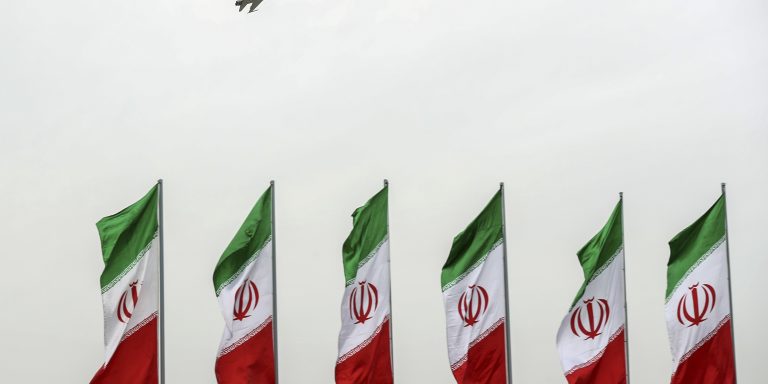INTELBRIEF
May 14, 2019
IntelBrief: Tensions Escalate Between the U.S. and Iran

- Tensions have spiked between the U.S. and Iran recently, with both countries engaging in a series of tit-for-tat actions and heated rhetoric.
- But conflict should not be considered inevitable; containing Iran is possible and presents a favorable alternative to direct military conflict.
- Iran’s ‘playbook’ is based upon empowering the IRGC-QF to build armed factions into political movements with increasing influence and capabilities.
- The Trump administration largely views Iran through the lens of ‘supporting terrorism,’ which it does, but this frame is short-sighted and fails to appropriately capture the comprehensive nature of how Iran operates.
.
Since the Trump administration assumed office in January 2017, it has increased pressure on Iran. In May 2018, the U.S. withdrew from the landmark Joint Comprehensive Plan of Action (JCPOA), or Iran nuclear deal, negotiated under the Obama administration, re-imposing strict economic sanctions on Iran. In April 2019, the administration designated Iran's elite Islamic Revolutionary Guard Corps as a foreign terrorist organization (FTO). In response, Iran declared the entire U.S. military as a terrorist entity. This month, in response to U.S. claims of possible attacks on American forces in the Middle East, a carrier strike group was deployed to the Persian Gulf. Iran's President Rouhani announced that Iran was taking steps to curtail its compliance with the nuclear deal, a move guaranteed to ratchet up tensions with Washington, even as the Europeans scramble to mollify all sides involved. As a new report by The Soufan Center highlights, an assessment of Iranian foreign and security policy demonstrates that conflict should not be considered inevitable and that by analyzing Iran's so-called 'playbook,' containing the Islamic Republic is possible, and also presents a favorable alternative to the U.S. when compared with the option of direct military conflict.
The core of Iran's 'playbook' has been to establish militia groups – mostly Shias, first as armed factions and then, through training, funding and the provision of weapons, into organizations that acquire political legitimacy, seats in national parliaments and cabinets, and, over time, major roles as national decision makers. Historically, Iran has sought to nurture its allies and proxies to the point where they, and by extension Iran, can usurp state power from within. Iran is then able to harness that state power to its strategic advantage, particularly by reorienting regional states toward Iran and away from the U.S. and other Iranian adversaries. More importantly, it has done so without provoking a major armed conflict with the U.S., Israel, Saudi Arabia, or any other powerful actors in the region, all while suffering only light casualties to its own forces.
Iran's regional strategy should not be understood as simply 'supporting terrorism,' which underestimates the degree to which Iran's overall grand strategy has succeeded, and in fact frustrated counter-efforts by capable powers like the U.S. and Israel in the past. Iran is widely viewed as promoting Shia sectarianism in the region, but it has sought to work with Sunni movements as well, although with far less success. The ongoing proxy conflict between Saudi Arabia and the United Arab Emirates, on the one hand, and Iran on the other serves to reinforce sectarian identity further and complicate and prolong conflict and humanitarian crises in the region. Iran has been able to capitalize on unexpected opportunities including the Arab Spring uprisings of 2011, as well as blunders by its regional opponents – exemplified by the Saudi Arabia-led decision to engage in military action in Yemen, as well as to isolate Qatar, a fellow Gulf Cooperation Council (GCC) state. Because it perceives its efforts as largely successful, Iran is certain to continue to pursue this regional strategy, unless and until its adversaries are willing or able to counter Iran’s efforts.
As tensions continue to escalate, further actions need to be weighed against Iran’s sophisticated, intricate, and nimble regional strategy. Rolling back Tehran’s regional influence is difficult because doing so would require the extensive application of military force, and even that option is not guaranteed to succeed, as the Saudi-led coalition is realizing in Yemen. Public support for major U.S. interventions in the region has clearly declined over the past decade and the U.S., no matter what administration is in office or what is its policy toward Iran, is not likely to further intervene militarily in any regional conflict for the sole reason of blunting the impact of Iran's regional strategy.
.
For tailored research and analysis, please contact: info@thesoufancenter.org
[video width="960" height="540" mp4="https://thesoufancenter.org/wp-content/uploads/2019/05/IB-0514.mp4" poster="https://thesoufancenter.org/wp-content/uploads/2019/05/AP_19108346990211.jpg"][/video]